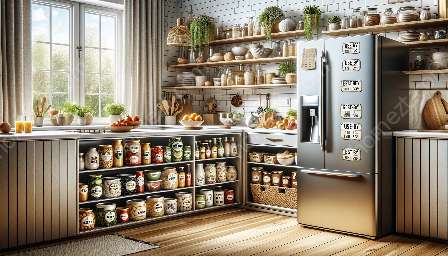Good personal hygiene is a critical aspect of food preparation that directly impacts food safety and home security. This comprehensive guide explores the essentials of good personal hygiene in food preparation, providing valuable information and practical tips for maintaining cleanliness, reducing health risks, and preventing contamination in the kitchen.
Understanding the Importance of Personal Hygiene in Food Preparation
Personal hygiene refers to the practices and habits that individuals maintain to promote their overall cleanliness and well-being. In the context of food preparation, good personal hygiene is essential to minimize the risk of foodborne illnesses and ensure the safety of the meals being prepared.
When it comes to home kitchens, maintaining good personal hygiene is not only crucial for food safety but also plays a significant role in overall home safety and security. By following proper hygiene practices, individuals can create a healthy and secure environment in their homes.
Key Aspects of Good Personal Hygiene in Food Preparation
To effectively address the essentials of good personal hygiene in food preparation, it's important to focus on several key aspects:
- Handwashing: Proper hand hygiene is one of the most fundamental aspects of personal hygiene in the kitchen. Individuals should wash their hands thoroughly with soap and water before handling food, after using the restroom, and after touching potentially contaminated surfaces or objects.
- Wearing Clean Clothing: It's essential to wear clean and appropriate clothing when preparing food at home. This practice helps prevent the transfer of contaminants and maintains a hygienic food preparation environment.
- Good Respiratory Hygiene: Practicing good respiratory hygiene, such as covering the mouth and nose when sneezing or coughing, is crucial in preventing the spread of germs and maintaining a clean kitchen environment.
- Minimizing Jewelry and Accessories: While preparing food, individuals should minimize the use of jewelry and accessories, as these items can harbor bacteria and other contaminants. Keeping accessories to a minimum reduces the risk of contamination.
Integrating Food Safety in Home Kitchens
When discussing personal hygiene in food preparation, it's important to highlight the integration of food safety practices in home kitchens. Proper food handling, storage, and cooking techniques are essential components of ensuring the safety of the food being prepared and consumed at home.
In addition to personal hygiene practices, individuals should also pay attention to:
- Proper Storage of Food: Ensuring that perishable foods are stored at the correct temperatures and in appropriate containers helps prevent the growth of harmful bacteria and prolongs the shelf life of food items.
- Thorough Cleaning of Cooking Surfaces: Regular cleaning and sanitization of kitchen surfaces, utensils, and equipment are essential in preventing cross-contamination and maintaining a hygienic food preparation environment.
- Safe Cooking Temperatures: Understanding and adhering to safe cooking temperatures for various types of food helps eliminate harmful bacteria and pathogens, making meals safe for consumption.
Enhancing Home Safety & Security Through Good Personal Hygiene
Good personal hygiene in food preparation also contributes to overall home safety and security. By conscientiously practicing personal hygiene habits, individuals can promote a safe and healthy living environment in their homes.
Some ways in which good personal hygiene supports home safety and security include:
- Preventing Foodborne Illnesses: By maintaining good personal hygiene in food preparation, individuals reduce the risk of foodborne illnesses, which contributes to the overall well-being of household members.
- Reducing Cross-Contamination: Proper hygiene practices minimize the risk of cross-contamination in the kitchen, safeguarding the integrity of food and reducing the likelihood of food-related health issues.
- Creating a Healthy Environment: Good personal hygiene practices contribute to creating a clean and healthy home environment, minimizing the presence of germs and pathogens that could pose health risks to residents.
Conclusion
In summary, understanding the essentials of good personal hygiene in food preparation is crucial for ensuring food safety in home kitchens and maintaining home safety and security. By incorporating proper handwashing, clothing hygiene, and respiratory hygiene practices, individuals can significantly reduce the risk of foodborne illnesses and create a secure and healthy environment in their homes. Additionally, integrating food safety measures and maintaining a clean and organized kitchen further enhances the overall safety and well-being of household members.
By prioritizing good personal hygiene in food preparation, individuals can enjoy peace of mind knowing that they are contributing to a safe, healthy, and secure home environment for themselves and their families.

























